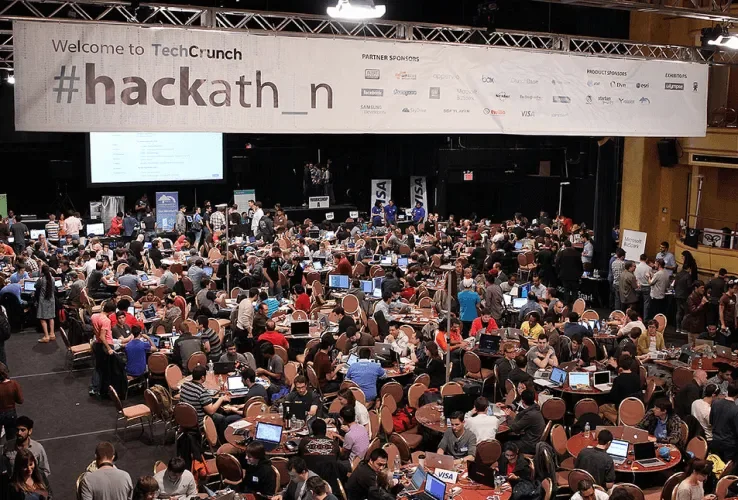How It Works
AgenticBlox is a web-based platform that enables users to create, share, and link AI-powered synthetic personas (agents) to perform real work tasks. The platform is designed to be model-agnostic, allowing integration with various AI models and enabling complex workflows by breaking down tasks into smaller subtasks.
With AgenticBlox, users can create synthetic agents modeled after real or fictional people, or even machine processes. Each persona is initialized with a specific personality, context knowledge, and choice of AI model. Methods—essentially reusable prompt workflows—define what an agent does, allowing users to build up a library of default and tested approaches that can be managed, shared, and improved by the community.
Solutions are created by linking together personas and methods in workflows. This allows complex jobs to be broken down into smaller, manageable subtasks, chaining multiple agents and methods together with clear input and output handling. All solutions can be collaboratively developed and refined to address real problems.
AgenticBlox is vendor-agnostic, supports public sharing and voting on personas, methods, and solutions, and is carefully designed to provide value for both technical and non-technical users. Contributors gain real, portfolio-ready experience building tangible, modular AI tools that address practical needs.
Our approach isn’t about building isolated chatbots—it’s about establishing a living, collaborative ecosystem for modular AI.
Product Vision
1. The Builder Layer
This is where AI-powered solutions are created using three core components:
• Personas – initialized agents with model, role, and context (including optional RAG)
• Methods – high-quality prompts designed to perform specific tasks
• Flows – logic that connects agents and methods into a working, multi-step system
While this doesn’t require writing code, it does require some sophistication — understanding the problem domain, initializing agents effectively, designing prompt instructions, and assembling logical flows.
Personas and methods are reusable across solutions and can be contributed to a shared public library. Flows, on the other hand, tend to be unique to each solution and encode the problem-specific orchestration.
2. The User Layer
Once a solution is built, it can be published as an app — ideally mobile or web-based — where all complexity is hidden from the end user.
These fielded apps can be shared with anyone: coworkers, classmates, friends. The user doesn’t need to understand prompts, agents, or orchestration logic — they just get a usable, intelligent tool.
Why This Matters
Most AI apps today are just wrappers — useful but locked down, opaque, and unshareable. We want to open that up.
Our goal is to build a crowdsourced, modular system of reusable AI building blocks, inspired by LEGO — and a publishing layer that turns these blocks into simple, usable apps that anyone can access.
We’re creating tools not just for AI enthusiasts, but for everyday users — by making the building layer accessible and the output layer dead simple.
Sample Solutions
Resume Reviewer
What it does:
Upload your resume and receive targeted feedback tailored to your field or desired role. The reviewer highlights unclear phrasing, suggests specific improvements, and spot-checks formatting, making it easy to polish your application and stand out to employers.
Custom Email Writer
Provide a brief prompt (for example, “email a professor about a project” or “follow up after a job interview”) and get a well-composed draft matched to your purpose and audience. You always review and edit the draft before sending, ensuring you stay in control but save time and effort.
FlashCard Generator Study
Paste your notes or an article link, and the tool generates Q&A-style flashcards for quick study sessions or group review. Perfect for efficient revision and reinforcing key topics, whether studying solo or sharing with classmates.
Future Goals
In the moment, the desire is to keep the scope manageable. Once the project gets traction, many different monetization models could be thought about.
While most companies say today they use AI, the vast majority does not use AI in their central enterprise processes. They equip employees with chat sessions, that most employees use for simple tasks such as rewording or to lookup knowledge, or they may deploy simple agents such as a customer service chat. ERM solutions today, are decisions trees and workflows that were often built over many decades. No AI solution today can replace Oracle, SAP, or Workforce today. While these solution put claim on ‘AI’, the actual use within the system is very very limited, sometimes to no more than to integrate a chat-wrapper. However, AI is an awesome candidate for replacing granular decision trees with a kind of fuzzy-logic. But in order to really use AI in such a role, an easy framework has to exist that does not require expansive and lengthy custom development.
The potential of this project is therefore tremendous.


